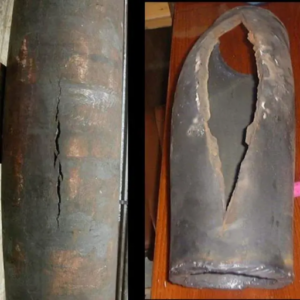Creep deformation is an important aspect of materials science and engineering, which happens when materials are under long-term exposure to high levels of stress at high temperatures. It gradually occurs with time and this is time dependent deformation can greatly affect the structural integrity as well as durability of engineering components making it an essential area for research by engineers and material scientists. The blog here will give a deep insight into the basics of Creep Deformation, explaining stages, mechanisms and factors influencing its behavior in various materials. By understanding the principles underlying creep deformation, readers will gain insights into how to predict and mitigate its effects thereby ensuring reliability and safety of engineering structures.
What is Creep Deformation and When Does it Occur in Engineering Materials?
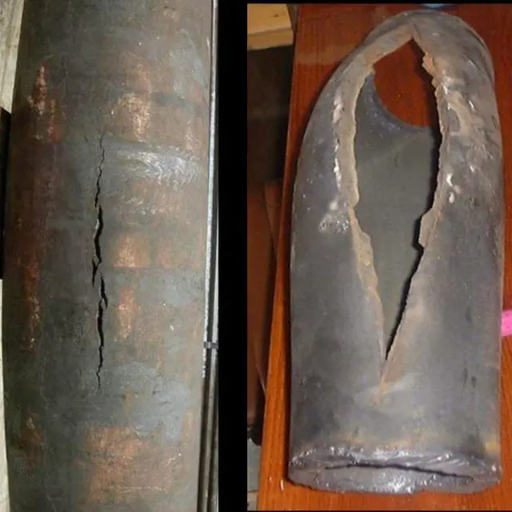
Image source: https://www.tribonet.org/
Creep is a slow form of plastic deformation that occurs in materials under constant stress over a long period. It usually occurs in engineering materials when they are exposed to high temperatures, typically above one third their melting point temperature, and it is especially remarkable in high-temperature applications such as turbine blades, nuclear reactors, and other parts that operate at constant strain and high temperatures. Engineers need to know the reasons behind occurrence of creep deformations since they help them design materials as well as structures which can withstand these conditions without failure.
Defining Creep Deformation: A Material Science Perspective
‘Creep deformation’ is the term used to describe the tendency of a solid substance to slowly shift or alter its shape permanently under mechanical stresses. It can be divided into three stages from the perspective of materials science: primary or transient creep, when the rate of deformation decreases with time; secondary or steady-state creep, having a constant rate of deformation; and tertiary creep, during which deformations increase in velocity until failure takes place. Creep occurs through mechanisms such as dislocation motion, grain boundary sliding, Nabarro-Herring diffusion and Coble diffusion. Factors affecting creep behavior include temperature, applied stress, material microstructure and environmental factors like oxidation that can enhance the rate of creep.
Stages of Creep Deformation: Primary, Secondary, and Tertiary
Primary (Transient) Creep
The initial stage of creep deformation process is called primary or transient creep. In this phase, the material undergoes a rapid deformation that decreases with time. This first fast deformation is mainly due to immediate response of microstructure of the material to stress applied. The material’s dislocations start moving and grain boundaries begin adjusting during this stage which results in an overall strain rate decrease as the material experiences strain hardening.
Secondary (Steady-State) Creep
Secondary or steady-state creep has a constant rate of strain. It is referred to as steady-state because at this point, the hardening mechanisms are counterbalanced by softening mechanisms in such a way that there is a uniform rate of deformation over time. This period usually spans out for quite some time and it is important in predicting the life span of components when they are being designed. The steady state creep rates are strongly temperature dependent and are influenced by microstructures and stresses applied on materials.
Tertiary Creep
Tertiary creep marks the final phase where deformation accelerates rapidly resulting in failure of materials eventually. Fast speed up its drift primarily manifested as necking, void formation, and grain boundary separation among others damages that accumulate within it cause an increase in the deforming velocity. In addition, large-scale changes occur within them causing significant loss of structural integrity that ultimately ends with fracture or rupture of these materials. Tertiary creep determines how long high-temperature materials will subsist and therefore plays crucial role in designing high-temperature resistant materials for use with long component lifetime expectancy as well as ensuring sustained service lives thereof.
Factors Leading to Creep: Temperature, Stress, and Time
Temperature
Materials under creep are greatly influenced by temperature. This is because as temperature increases, the movement of atoms and dislocations also increase thus increasing creep rate. When subjected to high temperatures, materials can easily deform since they lose their hardness and become more vulnerable to creep. Therefore elevated temperature for long time periods makes material experience significant creep.
Stress
Creep in a material depends on the amount of stress applied to it. High stresses make it easier for defects such as dislocations to move through a material resulting in faster deformation. Stress also accelerates time dependent damage mechanisms like void formation or grain boundary sliding especially when these approaches yield strength.
Time
In the long term applications, time is an important factor within which creep progresses. The more prominent the deformation that occurs via creeps, the longer a given material remains under a constant load at an increased temperature. Over extended durations, atomic diffusion as well as other microstructural adjustments will eventually produce some permanent deformations on it. Prediction of life service followed by careful monitoring is needed in high-temperature, high-stress situations due to their time-dependent nature of creep which if not immune may cause premature failure.
What are the Stages of Creep and their Characteristics?
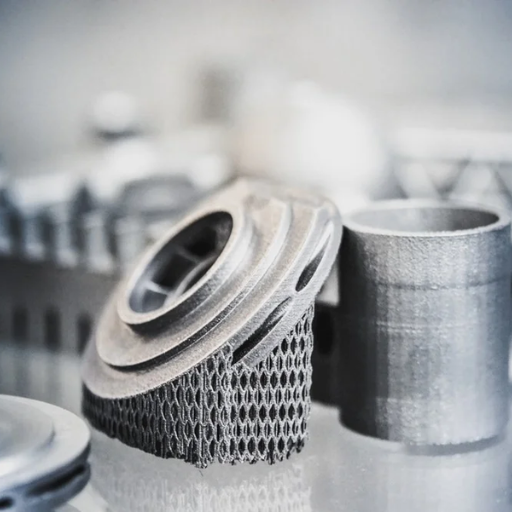
The creep deformation is usually separated into three distinct stages primary, secondary tertiary.
Primary Creep: Initial Deformation
Firstly, in the primary creep stage, there is an initial rapid increase in strain as the material adjusts to the applied stress. The first part involves a high amount of creep that slowly reduces because of work hardening. This then leads to an increased internal resistance against further deformation within a number of dislocations beginning to move and multiply inside the material. At steady-state creep, such dislocations interact with and obstruct each other’s movements and temporarily stabilize the substance slowing down its rate of deformation.
Secondary Creep: Steady-State Deformation
Steady-state or secondary creep is another name for this phase where deformation occurs at almost constant rates in materials. Within this stage, there exists a balance between work hardening and recovery processes thus stabilizing the rate of sliding. During secondary creep, such microstructural changes as sub-grain formation combined with dislocation rearrangement enable continued stretching without significant alterations to the strain rate. This phase is important in predicting long-term performance/expected life time for materials subjected to high temperature environments, hence engineers/material scientists focus on it during design of components which have to sustain prolonged loading.
Tertiary Creep: Accelerated Deformation Leading to Failure
The third phase known as tertiary creeping ultimately results in material failure with rapid deformations being witnessed leading to collapse of a bulk structure. In this stage also there are significant structural changes like coalescence among voids present together with crack growth causing major reductions in the cross-sectional area thereby increasing stress concentrations and enhancing the speed of deformation process occurring within the material. Tertiary creeping often goes through necking where material gets thinner and elongate until rupture occurs. For instance, sudden increases in strain rate observed at this period call for close monitoring by engineers so as to limit any conditions likely to accelerate it thereby guaranteeing safety/risk free operation of these high stressed components throughout their useful lives.
How Does Creep Result in Material Failure?

Material failure due to creep involves a progressive deformation process under prolonged stress, especially at high temperatures. This eventually leads to microstructural changes, such as voids, cracks and grain boundary sliding as strain accumulates over time. The material’s structural integrity is compromised by these alterations because they decrease the area of cross-section and enhance stress concentrations. Tertiary creep marks an accelerated rate of deformation which causes necking and ultimate rupture. Therefore it is imperative that conditions that can accelerate this process be monitored so that the materials stay strong and stable for long periods of time.
Understanding Creep Failure: Mechanisms and Signs
Creep failure manifests through different manners and exhibits few indications that engineers should understand in order to prevent catastrophic failure. These general mechanisms include:
- Thermal Activation: Atomic mobility in a material is accelerated by high temperature exposure which leads to creep. This can be observed in metallic materials and alloys employed for applications such as turbines or engines where the temperatures are very high.
- Grain Boundary Sliding: At high temperatures, grains within the material move more easily with respect to each other, causing deformation. This occurs significantly in polycrystalline materials where strain may get worse due to various grain orientations.
- Void Formation and Crack Propagation: Prolonged stress tends to give rise to micro-voids, mainly along grain boundaries. Eventually these voids merge together while cracks keep on spreading thus the integrity of material will be compromised resulting into its failure.
Signs of Creep Failure:
- Dimensional Changes: Material becomes noticeably elongated or thin (necking).
- Surface Cracking: Small cracks appear on surface which may also propagate internally.
- Increased Strain Rate: The rate of deformation increases quickly especially during tertiary phase.
Early identification of these mechanisms and symptoms would allow one to take proactive steps like choosing appropriate materials, making design adjustments or regular monitoring that could help manage creep damage and maintain long term structural stability.
Examples of Creep Failure in Metal and Other Materials
- Jet Engine Turbine Blades:
It is well known that turbine blades in jet engines are subject to creep failure due to high temperature and stresses. Ultimately, their efficiency as well as structural strength get reduced over time because of elongation and deformation under severe thermal conditions. This risk can be managed through regular inspections and use of advanced materials such as single-crystal superalloys.
- Steam Generator Tubes:
In power plants, steam generator tubes undergo very high temperatures and pressures. This has the effect of accelerating creep which eventually leads to the thinning down and ovalization of these tubes thereby increasing rupture possibilities. Preventing failures requires the use of creep-resistant alloys coupled with conducting scheduled maintenance checks.
- High-Pressure Pipework:
Pipework found in chemical and petroleum installations can also be subjected to hot temperatures and high pressure conditions. Even though stainless steel plus alloy steels are able to resist the tendency, they may still yield under long-term loading by creep process. These issues can be mitigated by using sensing devices for real-time monitoring while selecting better creep resistant materials during design.
Preventative Measures to Mitigate Creep Failure
A multifaceted approach must be followed to arrest the possibility of creep failure through careful material selection, design optimization and continuous monitoring. Creep delay can be achieved by using nickel-based super alloys, stainless steel and other advanced materials with high creep strength. Design parameters should also be optimized to prevent creep deformation; thick sections, supporting structures, temperature reduction and reduced stress operating conditions can minimize this influence on design. Routine maintenance needs to be implemented as well as surveillance techniques such as ultrasonic testing or radiographic inspection for both diagnostic purposes and real-time creeping recognition using sensors. Furthermore, additional preemptive measures include subjecting the material to heat treatment that alters its microstructure so as to enhance its resistance against creep. Through an application of all these precautionary methods, the risks associated with creep failure are minimized thereby ensuring long term dependability and safety of vital components.
What Are the Different Mechanisms of Creep?
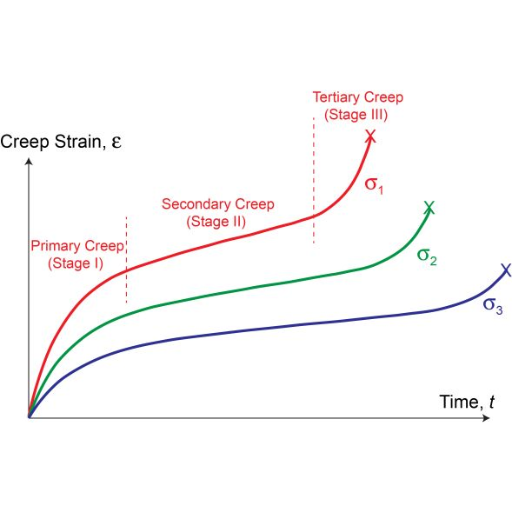
It is important to realize that creep, which differ with materials, temperatures and stresses applied to them. Dislocation creep happens at high enough stresses and includes dislocations moving through the crystal structure interacting with one another. Atoms diffuse throughout the lattice or along grain boundaries when diffusion creep takes place which occurs under conditions of low stress and high temperature. Grain boundary sliding is associated with displacement of grains themselves resulting from their shifting each other, often due to high temperature as well as low stress states. Finally there is climb-controlled creep in which dislocations move perpendicular to slip planes due to diffusion of vacancies. All these mechanisms over time contribute towards material deformation; hence, it is essential for engineering practices to understand and prevent creep.
Dislocation Creep: Impact on Material Strength
So long as the temperature is high and the stress level is elevated, dislocation creep has a significant effect on material strength by allowing deformation, which makes the material’s carrying capacity diminish with time. This entails the shuffling around of dislocations that are lattice defects in atomic arrangement. When they slide and climb, dislocations make it easier for plastic deformation to occur, thereby weakening the overall structural integrity. Influence of factors such as microstructure, temperature and stress levels on the rate of dislocation creep have been reported by sources like TWI Global, ASM International, ScienceDirect etc.. Materials having higher dislocation densities or those experiencing prolonged exposures to stress at elevated temperatures exhibit increased creep rates leading to potential engineering failures. Therefore, understanding and controlling dislocation creep is important for reliability and longevity of high-stress components.
Diffusion Creep: Coble and Nabarro-Herring Mechanisms
Atoms diffuse through crystal lattice, helping to deform it without any movement of dislocations is diffusion creep. There are two main kinds of diffusion creep that are Coble Creep and Nabarro-Herring creep respectively.
Coble creep is a process where atoms move along grain boundaries. This kind occurs at lower temperatures and smaller grain sizes in materials with considerably large grain boundary volume. In polycrystalline materials, the deformation is more expressed when the grains slip along their boundaries leading to a solid state slip.
On the other hand, Nabarro-Herring creep comes about when atoms pass through the bulk of the crystal lattice as opposed to moving along grain boundaries. This takes place mostly at higher temperatures and in larger grained materials. Deformation of the material happens through stress relaxation due to atomic migration within a single grain rather than significant sliding of grain boundaries.
Both mechanisms account for high temperature behavior under stress especially for engineering applications where long term stability of material is important. Detailed studies from sources like ASM International, TWI Global, ScienceDirect among others show that these various inputs can be helpful in controlling operating temperatures and size of grains for minimizing impact resulting from diffusion creep.
Grain Boundary Sliding and Its Role in Time-Dependent Deformation
GBS is an essential mechanism that contributes to time-dependent deformation in polycrystalline materials notably at high temperatures. GBS occurs when grains slide past each other along their boundaries and this can be facilitated by the presence of grain boundary films or defects. This process often accompanies other deformation mechanisms like diffusion creep which enables strains to be accommodated without the need of rearranging atoms within the grains themselves.
For instance, studies show that GBS becomes increasingly significant in fine-grained materials as reported in TWI Global, ASM International, and ScienceDirect journals. At higher temperatures, the strength of individual grains is reduced allowing more sliding along the boundaries. The negative consequences of such events on material deformations have made it important for them to be studied with great concern in fields that involve high temperature engineering applications such as turbine blades and nuclear reactors where sustained material integrity is critical. Consequently, comprehending GBS and its control through grain size adjustment and operating temperature change are vital to enhance performance expectations and prolongation of life under harsh conditions.
Conclusion
In summary; it is necessary for us to understand how diffusion creep works as well as grain boundary sliding so that one may predict and mitigate time dependent deformations in materials hence ensuring stability/ endurance while using them for high temperature applications.
How is Creep Tested and Measured in Engineering Materials?
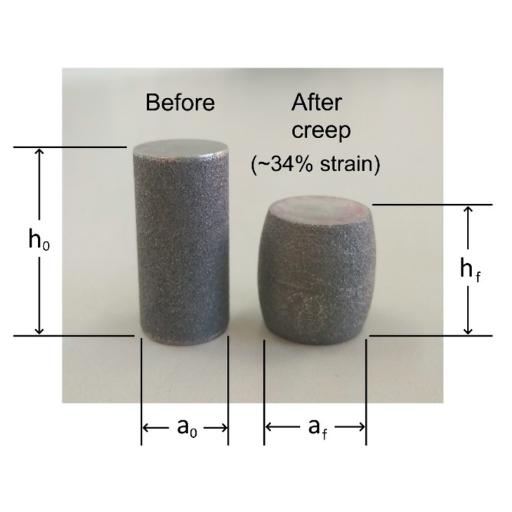
When creep testing is performed on engineering materials, a specimen is subjected to constant stress at a fixed temperature for a long period of time. This simulates the conditions under which real-world materials may exhibit time-dependent deformation. The creep rupture test is one of the common methods where the failure time at constant load and temperature is recorded. It helps to determine the long term strength and durability of the material.
Another technique is by doing creep strain test which measures how size changes with time under constant stress. This reveals information about initiation, steady state (secondary) and acceleration (tertiary) stages of creep that can help engineers understand behavior of material across these periods. Stress relaxation tests are also another option whereby stress reduction over time while maintaining strain level constant provides additional information about material properties.
The analysis of microstructural changes during creep involves optical microscopy, electron microscopy and X-ray diffraction as well as other similar procedures. On top of this, sophisticated nano-indentation testers and thermomechanical analysers like TMA facilitate precise measurements for deformation in micro- and nano-scale levels.
These testing techniques provide engineers and researchers with extensive knowledge concerning creep characteristics so that they could develop materials and structures capable of remaining intact throughout their service life even when exposed to high temperatures over an extended duration.
The Creep Test: Procedures and Equipment
Setup and Preparation
Performing a Creep Test requires specific setup and preparation. The material sample is cut out into the desired shape which is usually cylindrical or rectangular. Uniform dimensions are maintained. Then, it is pre-conditioned to eliminate any residual stresses by often experiencing a small load for a short period before the actual test begins.
Equipment Used
Load Frames: These machines use constant loading on the specimen throughout the time of testing. They should be well calibrated so that over time, there will be no change in the load.
Furnaces: For carrying out a creep test, maintaining a uniform high temperature is important. Furnaces with exact temperature control are thus employed to simulate the operating conditions under which the material will serve.
Extensometers: These gadgets measure strain or elongation by attaching them on specimens to continuously monitor deformations at a given interval of time.
Data Acquisition Systems: In modern creep tests, advanced data acquisition systems record strain, temperature and load in real-time enabling accurate monitoring and analysis of material behaviour during testing.
Testing Procedure
- Initial Setup: Sample is placed in Load Frame; attachment of extensometers. Thereafter, furnace is heated until required test temperature is reached.
- Loading Phase: The specimen starts bearing constant load when set up attains targeted temperature during heating. Therefore, throughout this whole experiment, this loading remains unaltered.
- Monitoring: Elongation of sample by extensometer happens as stress related changes occur in it continually. Data acquisition systems analyze all needed parameters ranging from temperatures to applied loads in order to build an inclusive database.
- Observation and Recording: The material fails or completes specified test duration after which recording continues until such time as. This information shows different creep phases occurring during primary to tertiary for detailed capture of particular creep behavior under given circumstances.
These procedures enable engineers to produce dependable and accurate data regarding creep properties, necessary for predicting long-term performance and ensuring structural integrity in practical applications of materials.
Interpreting Creep Curves and Strain Rates
Analysing the creep curves means that we have to look at how time and strain relate under constant load and temperature. Essentially, a typical creep curve is divided into three zones namely; primary, secondary or steady-state and tertiary. The primary stage is characterized by material hardening which leads to diminishing rate of creep with time. In the secondary stage, also known as steady state or linear region, strain rate is constant over time and this helps on long-term predictions on the properties of the material. The tertiary phase comprises an accelerating crack growth leading to the final failure.
In this context, strain rates in the second phase are particularly crucial since they provide insight into materials’ durability and long-term performance. The slope of the graph in this range is used to calculate a constant rate of creeps that help establish resistance to creeps for this material. For instance, these rates are influenced by factors such as temperature, applied stress, and material characteristics. Understanding such variables will go a long way towards guiding your choice of materials during design in order guarantee continued safety and durability of structural components.
Creep Equation: Mathematical Models of Creep Behavior
In order to describe creep behavior, mathematical models are usually expressed in the form of creep equations relating creep strain to time, stress and temperature. One of the most common models is the Norton-Bailey law which can be represented as follows:
\[ \epsilon = A \sigma^n e^{-\frac{Q}{RT}} t^m \]
where:
- \(\epsilon\) is the creep strain,
- \(A\) is the material constant,
- \(\sigma\) is the applied stress,
- \(n\) is the stress exponent,
- \(Q\) is the activation energy,
- \(R\) is the universal gas constant,
- \(T\) is the absolute temperature,
- \(t\) is the time, and
- \(m\) is the time exponent.
Another method that can be employed relies on Andrade equation, which combines decaying exponential and power-law function for primary and secondary creep phases. Similarly Monkman-Grant relation links steady-state creep rate with time to rupture that makes it possible to predict failure times during continuous loading under constant stress and temperature environment.
These equations and models help engineers design materials for long-term loading conditions, ensuring safety and durability of structures. Such predictions that include stress, temperature or material characteristics into its formulation ensures accurate findings regarding creep deformations and failure times which are so important in infrastructure design and maintenance.
What Are the Effects of Creep on Engineering Materials?
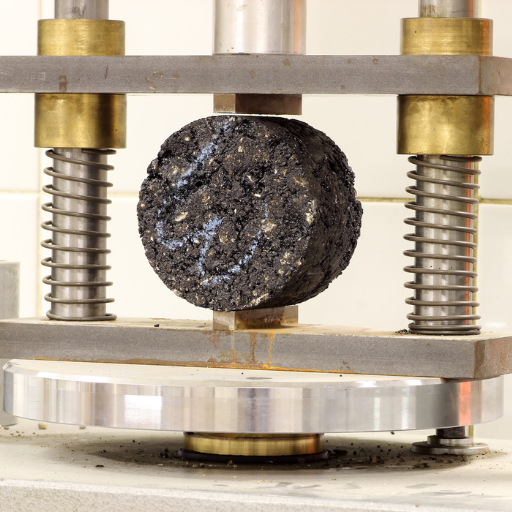
The main effects of creep on engineering materials are basically progressive deformation, loss in mechanical strength and eventual failure of material under sustained load and elevated temperature conditions. This progressive distortion over time can result in dimensional changes, which may cause the misalignment of parts thereby comprising the structure of the entire system. Moreover, the capability of the material to withstand stress reduces thus making it susceptible to fractures and tearing. Creep behavior is important for long-lastingness, safety, and performance of materials that must be used in critical applications within areas such as power generation, aerospace, construction etc.
Long-term Behavior and Performance Due to Creep
Creep causes permanent deformation of materials when they are stressed and heated at high temperatures over a long period of time. Accordingly, top sources say the material may undergo considerable changes in dimension and properties due to this sluggish deformation. Consequently, gradual failure may occur due to altering the dimensions and mechanical properties of the materials over time thereby affecting their structural integrity as well as load carrying capacity for engineering components. Proactive measures like using creep-resistant materials and regular maintenance and inspections can be instrumental in attenuating these effects and improving on the strength and durability of crucial structures like jet engines, nuclear reactors, bridges.
Impact of High Temperature and Stress on Creep Resistance
The creep resistance of a material is influenced by high temperature and stress greatly. In general, elevated temperatures lead to increased atomic diffusion in materials that fasten the process of creep deformation. This effect is compounded by high stress which promotes dislocation movement within the crystalline structure of a material thereby causing greater and more rapid plastic deformation.
According to the current leading sources, it has been noted that choosing nickel-based superalloys or other materials with inherently high creep resistance can greatly alleviate these effects. These materials remain mechanically stable at increased temperatures as well as stresses due to their superior microstructure stability. To improve the creep properties of materials, engineers also use various strength enhancement methods like alloying and heat treatment. Ensuring that a material operates within its intended temperature and stress boundaries is vital for maintaining structural integrity while extending the lifespan of crucial engineering parts. Hence, constant monitoring and preventive maintenance are key factors in managing how high temperature and stress affect the performance of a material.
Material Selection: Choosing Materials with High Creep Resistance
The selection of materials with a high creep resistance is important to ensure the durability and dependability of parts that are under intense operational conditions. From top current data, there seem to be three main classes of material with outstanding creep resistance:
- Nickel-Based Superalloys: These superalloys benefit from having high melting points and their ability to maintain strength and stability at elevated temperatures. They are regularly used in turbine blades and jet engines subjected to high stresses due to their outstanding stability in addition to astonishing microstructures.
- Cobalt-Based Superalloys: Also known for their resistance to thermal fatigue and oxidation, cobalt based superalloys are another favourite for use at high temperatures. These materials can be used at higher temperatures than nickel based alloys without losing mechanical properties.
- Intermetallic Compounds: Titanium aluminides including other intermetallics, which are lightweight as well as have exceptional high temperature strength, are gaining popularity. Theor ordered crystal structures assist them in long-term resistance against stress and heat.
This application of advanced materials in engineering designs can yield significant performance improvements, increase component’s life span under extreme operating conditions.
Frequently Asked Questions (FAQs)
Q: What is creep, and why is it significant in the field of engineering?
A: Creep, also known as creep deformation, is the time-dependent and slow deformation of materials under a constant load or stress. It is significant in the field of engineering because it affects the long-term performance and reliability of materials used in structural applications, particularly those exposed to high temperatures.
Q: What are the main stages of creep?
A: The main stages of creep include the primary or transient creep stage, where the creep rate decreases over time; the secondary or steady-state creep stage, where the material deforms at a constant creep rate; and the tertiary creep stage, where the creep rate accelerates until failure.
Q: What types of materials are most susceptible to creep?
A: Types of materials most susceptible to creep include metals, polymers, and ceramics. Materials with high melting points, such as nickel-based superalloys and certain steels, are specifically designed to exhibit high creep resistance.
Q: How does temperature affect the phenomenon of creep?
A: The temperature at which creep occurs is a critical factor. Generally, creep becomes significant at temperatures above approximately 30-40% of a material’s melting point. An increase in temperature typically leads to an increase in creep rate.
Q: What is meant by creep strain rate?
A: Creep strain rate is the rate at which a material deforms due to creep over a specified period. It is a critical parameter in assessing the long-term performance of materials under constant stress and elevated temperatures.
Q: How can engineers prevent creep in materials?
A: Creep prevention can be achieved through several approaches, including designing components with materials that have high creep resistance, operating at lower temperatures, applying protective coatings, and using appropriate heat treatments during manufacturing. These strategies reduce the likelihood of creep.
Q: What is the difference between Nabarro-Herring creep and Coble creep?
A: Nabarro-Herring creep is a creep mechanism that occurs through the diffusion of atoms through the lattice of the material, while Coble creep involves atomic diffusion along grain boundaries. Both mechanisms are temperature-dependent but operate differently within the material’s structure.
Q: Can polymers experience creep, or is it limited to metals?
A: Polymers can indeed experience creep, just like metals and ceramics. Since creep is a time-dependent deformation, polymers, especially those used in structural applications, must be designed to withstand long-term loading to prevent creep.
Q: What impact does creep deformation have on the performance of materials in engineering applications?
A: Creep deformation impacts the performance of materials by potentially leading to dimensional changes, loss of mechanical properties, and ultimately material failure over time. This is crucial in applications like turbine blades, nuclear reactors, and any other high-temperature environments.
Q: What are some real-world applications where understanding creep is essential?
A: Understanding creep is essential in applications like jet engines, power plants, bridges, and electronic devices. These applications often operate under high stresses and temperatures where creep can occur, making it important to consider in the design and material selection process.

